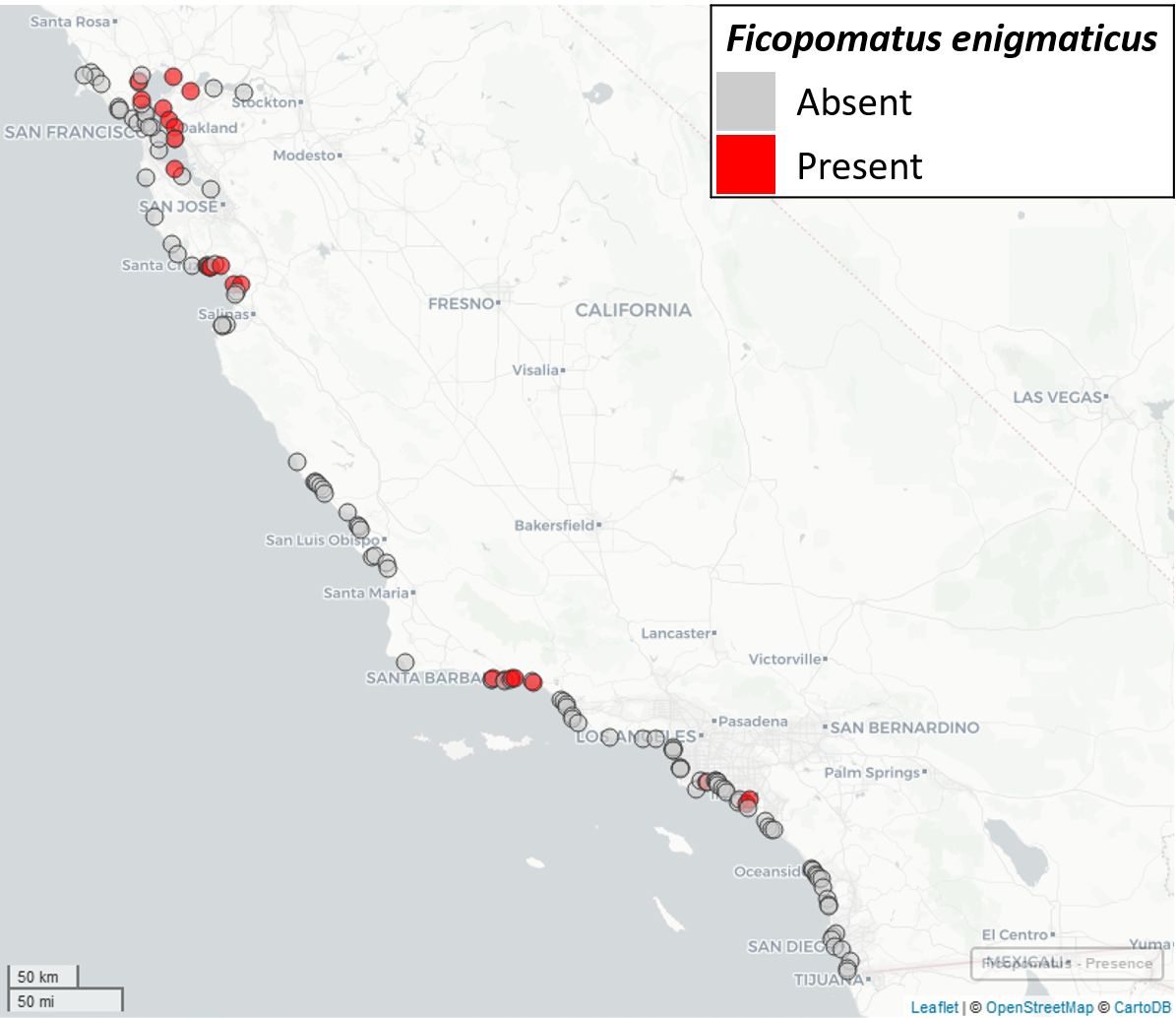Dr. Bruno Pernet, CSU Long Beach
November 30, 2018

Living
F. enigmaticus emerging from their
calcareous tubes.
One of many major changes to nearshore marine environments in the past 100 years has been the widespread movement of species from their native ranges to new geographic regions. Many of these introduction events have been mediated by human activities, especially marine shipping. Species can be transported from their native range to new regions on the hulls of ships, or in ballast water or other materials carried inside ships. When species invade new areas and establish populations, they often alter the ecology of native communities and can impact processes of direct economic interest to humans.
One such invasive species of concern to Californians is the “Australian tubeworm”,
Ficopomatus enigmaticus. Its native range is not definitively known, but as its common name indicates, some biologists suspect that it is originally from Australia. It has established populations in many other locations however and is now present on warm temperate coasts around the world, especially in estuaries. Individuals of this species build and inhabit tubes of calcium carbonate. Because they occur in dense aggregations, they can form “reefs” of thousands to hundreds of thousands of worms. These reefs often dramatically change the physical habitat. Aggregations of
F. enigmaticus on manmade structures like boat hulls, coolant water intake pipes, and tide gates may greatly impair the performance of these structures, and studies from around the world have shown that they have strong effects on both bottom-dwelling and planktonic communities.

136 F. enigmaticus sampling sites throughout California.
F. enigmaticus was first found in California in San Francisco Bay in the early 1920s and is still common there. It did not appear to spread further within the state until the early to mid-1990s, when a population was discovered 150 km to the south in Monterey Bay. Soon after that, in 2000 and 2001, a few individuals were found even further south in the Port of Los Angeles. In 2014, while engaged in another project, we found a very large, established population near the mouth of the Los Angeles River in Long Beach. Since then, our lab group at California State University Long Beach has been studying many aspects of the biology of this species in an effort to understand the history and future of its spread within the state.
COAST Rapid Response funding has supported two key components of this work. First, until now most records of the distribution of this species in the state had been collected incidentally while observers were carrying out other projects. COAST funding permitted us to carry out a large-scale planned survey in the summer of 2017. We sampled 136 sites along the coast in central and southern California to document
F. enigmaticus distribution at that point in time. All previously known populations were still present, and we discovered six previously unknown populations in Santa Cruz and Santa Barbara Counties. Our results provide a baseline against which we can evaluate future
F.
enigmaticus range expansions or contractions.

A student in the Pernet Lab searching for
F. enigmaticus
in San Francisco Bay.
Very recent work on
F. enigmaticus in Australia, its probable native range, suggests that it may consist of two genetically distinct species that are nearly identical morphologically. The two potential cryptic species often co-occur in the same location, and even in the same reef. It is not clear if these two genetically distinct types vary in other aspects of their biology. We are currently working with genetic markers developed by researchers in Australia to determine which version(s) of “F. enigmaticus” are present in California. These data will help us to better understand both the history of
F. enigmaticus introduction into the state as well as the future of its spread.
Dr. Bruno Pernet is a Professor of Biological Sciences at CSU Long Beach. COAST provided funding for this project: Rapid Response Funding Program Award# COAST-RR-2016-002, March 2017.